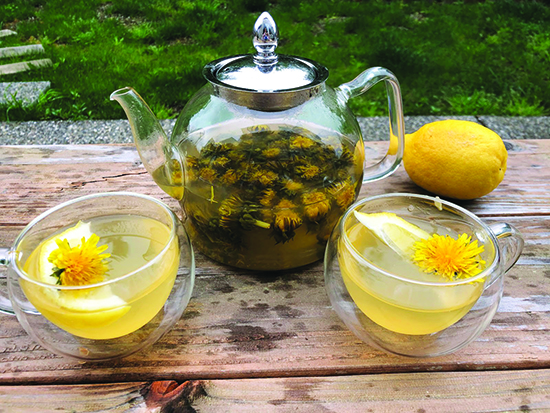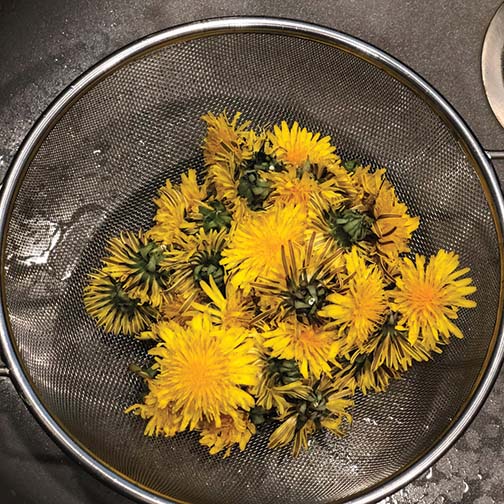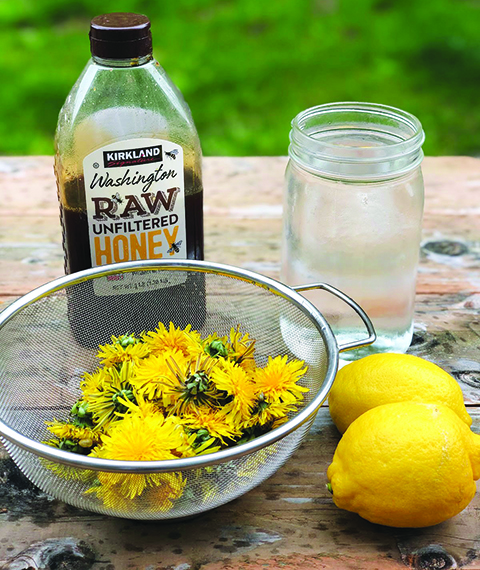
By SNAP-Ed Program Coordinator, AnneCherise Jensen
Dandelion plants are often regarded as a common weed or annoyance in one’s yard. They are also known for making special wishes when blowing off their whimsical dried petals in the summertime. Believe it or not, dandelions are also one of the oldest nutritive and medicinal plants in the world. Dandelion, or the scientific name Taraxacum officianle, first originated in Europe and were brought to the Americas in the early 1600’s.
Though this plant is often overlooked, dandelions contain a wide variety of vitamins, minerals and antioxidants. If harvested properly, dandelions can be used for a wide variety of health and wellness purposes. The best part about it, is that it’s FREE!
One of the most amazing properties about dandelions is the fact all parts of the plant can be used. The flowers are edible, having a semi sweet yet bitter taste. The leaves are also edible, and can be thrown into salads, smoothies and soups. The roots are also frequently used. Often they are dehydrated and used into a tea, vegetable broth or a tincture. Roasted dandelion roots can also be used as a coffee substitute, tasting very similar to regular coffee beans.

Foraging Tips
Harvest in areas that are chemical and pesticide free. When consuming a wild edible, you want to make sure its organic properties are free from any harmful compounds.
Avoid harvesting by popular trails or parks. Don’t forage in areas where dogs and other animals frequently visit. You don’t want to consume any plants that may have been urinated or defecated on by an animal.
Be sure to bring a basket, pair of gloves, hand shovel and scissors. Bring your phone to take some pictures and share your experience to friends and family online as well.
Only harvest what you will use and never take more than you need.
Health Benefits
Dandelions are a great source of vitamins, minerals and antioxidants. The leaves and root contain high amounts of Vitamins A, C, K and B Vitamins, as well as many minerals including magnesium, zinc, potassium, iron and calcium. Dandelions have a long history of use for problems of the liver, gallbladder, and bile ducts.
Today, Dandelion is a dietary supplement used as a blood “tonic,” as a diuretic, for minor digestive problems, and other purposes. Other recorded, but not well studied, uses of dandelion include blood sugar and hormone regulation.
During this time of quarantine, now is the perfect opportunity to try something new. The following recipe is a great way to incorporate dandelions into your diet. Try this at home with your family, use up some of those dandelions that are close to your home, and enjoy a refreshing spring time beverage.

Recipe: Dandelion + Honey + Lemon Iced Tea
Ingredients:
- 2-3 cups fresh or dried dandelion flowers
- 2-3 Tablespoons honey
- 1/2 cup fresh lemon juice (4 lemons)
- 1 quart purified water
Directions:
- Harvest approximately 2-3 cups of wild dandelion flowers. Place in a strainer and rinse well with cool water. Remove all dirt debris from the plant.
- Boil 1 quart of water. Then pour into a pitcher and add the honey.
- Let cool for a few minutes, then add 1 cup of fresh squeezed lemon juice.
- Add the clean wild dandelion flowers, mix well. Water should be warm so natural infusion can occur. You may also add in a few lemon slices here for extra zest and appeal.
- Place in the refrigerator and let chill for 2-3 hours, until cold. You can strain the dandelion flowers, or you can pour them into your cup.
- Enjoy! Use within 36-hours for best taste.
**This material was funded by USDA’s Supplemental Nutrition Assistance Program – SNAP. This institution is an equal opportunity provider.